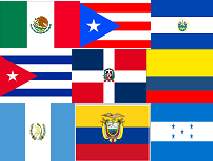
There are three funding phases anticipated to plan, build and operate the National Museum of the American People. None of them foresee using federal appropriations.
The first phase is to cover the cost of a study to explore the feasibility of creating the Museum, which we talked about in Blog #18. We estimate the cost would be up to $1.75 million for this study which would take approximately a year to produce. We plan to obtain support later this year from a handful of prospective major donors and foundations to cover this entire cost.
The second fundraising phase will be to raise all of the funds required to plan and build the Museum. Our model for this phase is the U.S. Holocaust Memorial Museum which raised all of its money to plan and build that museum from private sources. The work done in the feasibility study will let us know approximately how much money we will need for the NMAP and the time frame required to raise it. We expect it to be in the $600-800 million range.
While we will not be seeking federal appropriations for this phase, we will want legislation passed to create a self-funding entity charged with planning and building the Museum and raising all its funds required to do so. This legislation would officially designate the institution as a national museum.
That legislation would also do two other things to expedite the Museum. One would be a transfer of a prime piece of land in Washington from the National Park Service to the Museum entity. The particular plot we seek, the Banneker Overlook site, is already on NPS books as a site for a future national museum.
Another element of the legislation would allow the Museum to accept gifts from foreign governments. A senior U.S. diplomat, possibly a former secretary of state, could be recruited to obtain gifts of $1 million to $20 million, but with a cap so that no single nation could contribute an inordinate amount.
The Museum, telling about the origins of all Americans, can draw U.S. relationships with other nations closer. The heads of state from across the globe could be expected to participate in the Museum’s opening and the gifts from nations’ would be acknowledged in the Museum.
Another significant fund-raising element of the second phase is to seek seven-figure or higher gifts from selected individuals, foundations and corporations that have a special interest in their heritage, in civic education for all Americans and in strengthening our nation’s social fabric. And as the Museum tells the story of every customer of every corporation in the land, an association with the NMAP will carry a positive impact with every corporation’s customer base.
With significant gifts providing a solid financial base to begin planning and building the Museum, the last element of this phase is to engage in a broad national fund-raising effort to obtain gifts from all Americans in any amount.
Once the Museum entity is established by Congress, all money donated to that entity are considered gifts to the federal government and are ear-marked for the Museum. They would be tax deductible up to the limit laid out in the tax law.
The third phase is to fund the annual operating budget of the Museum. One element of this is to establish a major endowment that would be used for this purpose. So in addition to raising funds described in the second phase to plan and build the NMAP, funds from those sources would be applied to the endowment once the initial goals were reached.
In addition, income from Museum operations such as the book store, shops, restaurants, programs and facility rentals would be applied to cover operations. There would also be a significant on-going fund-raising effort to fund particular programs at the Museum and an effort to obtain grants for other programs as well. There would be an ongoing membership program and other general fund-raising efforts.
One significant source of income could be from visitor fees, but the NMAP would initially plan to follow the lead of the Smithsonian Institution and the USHMM which are free for visitors.
Whether federal appropriations are ever provided to the NMAP in the future to defray annual operating expenses would be up to future congresses and the public, but the National Museum of the American People is not planning for that contingency.
But first things first. Phase One will begin later this year.
Sam Eskenazi, Director, Coalition for the National Museum of the American People

